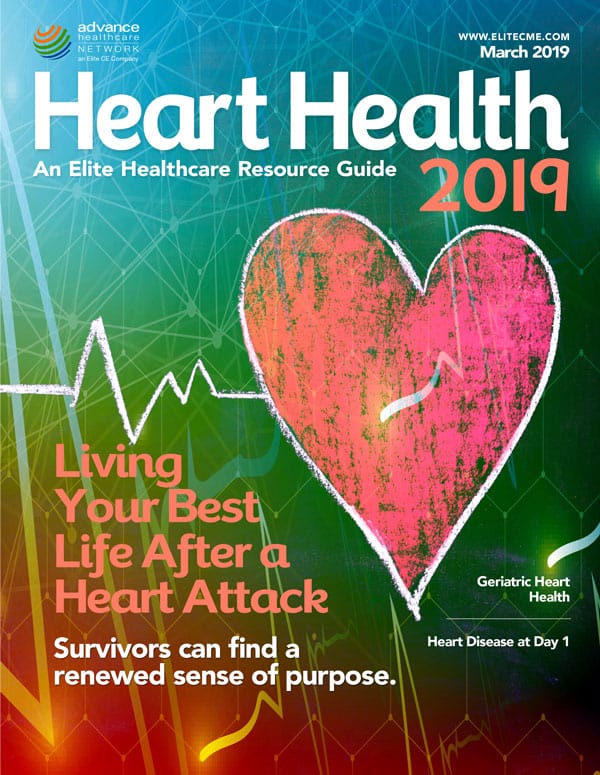From the January 2017 Issue
Codified clinical documentation is vital to the future of healthcare and improving patient outcomes. Pharmacists are emerging as a core member of the healthcare team, providing direct patient care by optimizing medication regimens and managing patients with chronic disease. Pharmacists and other healthcare professionals can enrich clinical data by leveraging health information technology (IT) standards and recording detailed clinical documentation.
Documentation codes transform information typically written or typed as progress notes into discrete data points structured to describe the care provided to an individual patient. Data can be exchanged, reported and analyzed to identify high-risk patient populations and determine which services optimize outcomes. Electronic record systems already capture many types of information as discrete data, including diagnoses, medications and laboratory results. However, much of the clinical story is not recorded. The importance of codified clinical documentation has been underscored by national initiatives to modernize the health IT infrastructure in the United States. The Meaningful Use program served as a launching pad, incentivizing hospitals and health care providers to adopt certified electronic health records (EHRs). Meaningful Use requirements include implementing standards for exchanging patient data with other providers and reporting clinical quality measures to the Centers for Medicare and Medicaid Services (CMS). Clinical documentation using standardized coding terminologies is the foundation for achieving these goals.
Systematized Nomenclature of Medicine Clinical Terms (SNOMED CT) is a coding terminology used for clinical documentation and a federally recognized standard for health information technology in the United States. SNOMED CT codes are standardized terms used to document findings, problems, interventions and outcomes. Codes are organized into value sets, or unique groups of codes, to aid implementation into electronic systems and support effective health information exchange and quality reporting.
Healthcare providers are most likely familiar with billing codes. Current Procedural Terminology (CPT) and International Statistical Classification of Diseases and Related Health Problems (ICD-9/10) have been mainstays in the healthcare system for years and attached to claims for reimbursement. Meaningful Use and quality payment programs drive providers to document additional clinical information to fulfill data reporting requirements. These programs require clinical information using SNOMED CT and other vocabulary standards and have stimulated clinical documentation beyond billing codes. However, requirements have also led to the implementation of rigid, time-intensive workflows that direct providers to capture required information during patient encounters.
SEE ALSO: How to Successfully Communicate Your Clinical Validation Concerns
Pharmacists are not considered healthcare providers under the Social Security Act and, therefore, not impacted by Meaningful Use. Although there is extensive evidence showing pharmacist care improves patient outcomes, these clinicians are unable to directly participate in provider-focused quality incentive programs. Pharmacists provide a variety of services including medication reconciliation, disease state management, medication monitoring and patient education. Clinical documentation by pharmacists is inconsistent and varies by practice, but widely adopted within Medication Therapy Management (MTM) programs. MTM is a Medicare Part D sponsored program that allows pharmacists to obtain reimbursement for clinical services. The CMS Innovation Center recently announced an Enhanced MTM Model beginning January 2017 and granting selected participants regulatory flexibilities and financial incentives for meeting certain requirements, including the submission of detailed clinical documentation using SNOMED CT. The data will undoubtedly be used to study patient care activities and understand factors that improve outcomes and reduce spending.
In some areas of healthcare, such as in the skilled nursing facility (SNF), consultant pharmacists are required by federal regulation to provide Medication Management Review (MRR) on a monthly basis and upon a change in condition. “New CMS requirements of participation for SNFs emphasize the need for medication review by a consultant pharmacist at transitions of care and the IMPACT Act of 2014 will require standardized data reporting for medication reconciliation across all sites of care,” noted Arnold E. Clayman, PD, FASCP, vice president of Pharmacy Practice and Government Affairs at the American Society of Consultant Pharmacists. With more frequent transitions into and out of facilities, consultant pharmacists need to communicate clinical documentation in a standardized manner.
In November, the Pharmacy HIT Collaborative published SNOMED CT value sets in the National Library of Medicine’s Value Set Authority Center. The value sets are designed to support standardized documentation of pharmacy services across all practice settings, regardless of which electronic system is used to capture the data. Value sets provide an infrastructure for consistent clinical data capture, exchange, and reporting with use cases that stretch beyond the Enhanced MTM Model. Data derived from the value sets could be used to share information between hospitals, clinics, pharmacies and other settings, supporting a unified care for each patient.
For example, pharmacists could ensure a patient has an accurate medication and allergy list that is updated each month and shared with the primary care provider and specialists. Consistent data could be reported to analyze individual patients or entire populations to determine risk and identify services that could improve outcomes. Results may show patients who meet with their community pharmacist within a week of hospital discharge may be at reduced risk for a 30-day readmission. Standardized documentation has many potential utilities, but must be widely adopted before the true benefit is realized.
Implementing codified clinical documentation will require significant investment, but the return is critical. Pharmacists are striving to compete in a quality-based payment environment. All health professionals must demonstrate value as a member of the healthcare team to remain viable. Clinicians can use documentation data to show impact on patient outcomes and make a case for participation in quality-based payment models and accountable care contracts. Provider organizations that demonstrate superior outcomes will have a competitive advantage in the marketplace.
The future of healthcare depends on data. Significant progress has been made, but more pioneering is required. Pharmacists and other health professionals have an opportunity to improve care coordination, impact patient outcomes and compete in value-based initiatives by leveraging standardized documentation. Provider organizations and software vendors must work together to overcome barriers to implementation and unlock the enormous potential of health data.
Samm Anderegg is a health information technology and pharmacy management consultant. In his current role with the Pharmacy Health Information Technology (PHIT) Collaborative, Dr. Anderegg serves as a project manager, chair of the Value Set Committee, and member of the Professional Service Documentation and Coding Workgroup.
References
1. SNOMED CT. U.S National Library of Medicine. Department of Health and Human Services, 20 Oct. 2016. Web. 11 Nov. 2016.
2. VSAC Frequently Asked Questions. Value Set Authority Center. U.S. National Library of Medicine, 27 Sept. 2016. Web. 11 Nov. 2016.
3. Porter, Sheri. Physicians Report Declining Satisfaction with EHRs. AAFP News. American Academy of Family Physicians, 25 Aug. 2015. Web. 11 Nov. 2016.
4. Chisholm-Burns MA, Kim Lee J, Spivey CA, et al. US pharmacists’ effect as team members on patient care: systematic review and meta-analyses. Med Care 2010; 48:923-33.
5. Part D Enhanced Medication Therapy Management Model. CMS Innovation Center. Centers for Medicare and Medicaid Services, 11 Oct. 2016. Web. 11 Nov. 2016.






